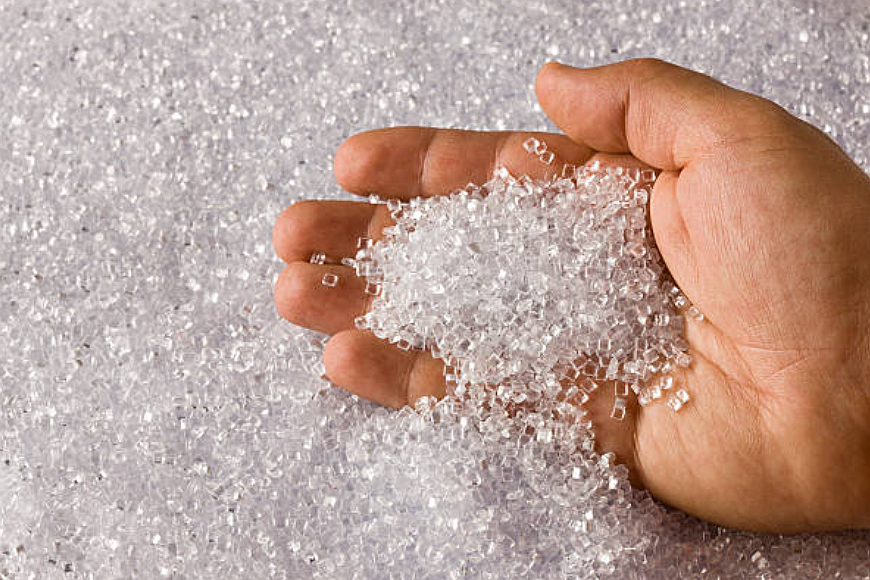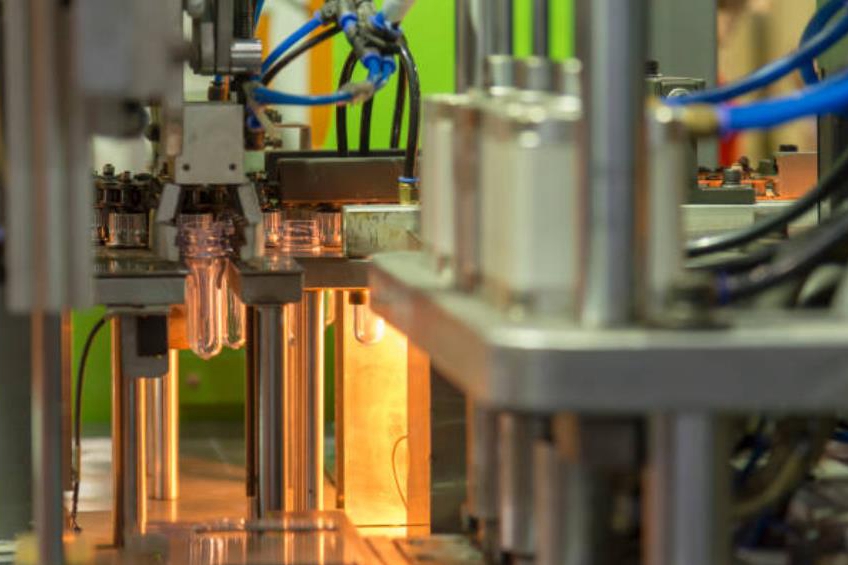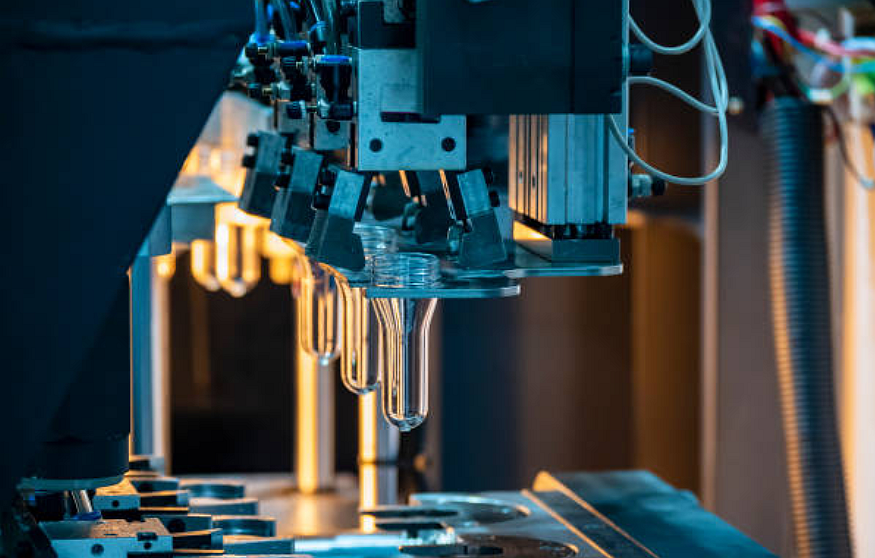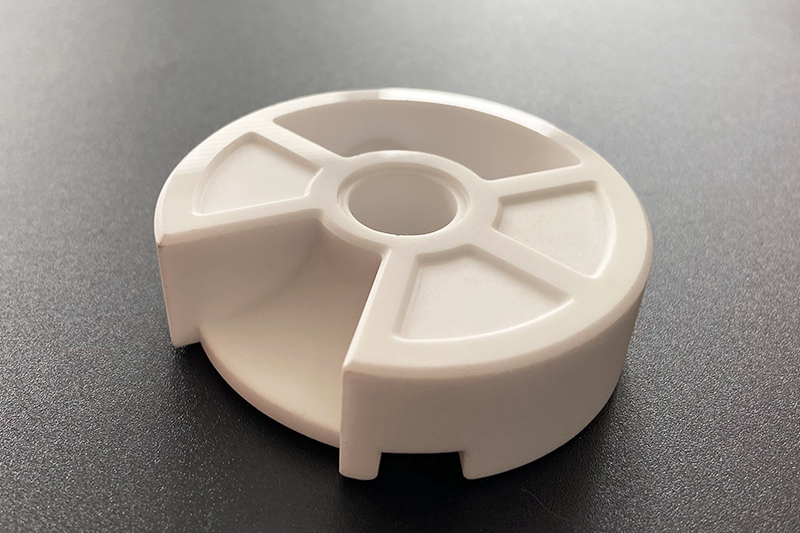What materials can be used in custom injection molding?
How to Select Injection Molding Materials
Selecting the suitable material is critical when custom injection molding plastic parts. The material must meet mechanical requirements like strength, rigidity, and impact resistance for the part's function and end use. Thermal properties like heat deflection temperatures and chemical comp ability must be assessed based on operating conditions. Aesthetic qualities like surface finish and color capability may be necessary. Materials must also meet production process needs regarding flow properties, shrinkage, and warpage tendencies. For parts seeing food or medical use, FDA-compliant resins are essential. Production Volumes should also be considered, as higher volumes may require more economical resins to control costs.

At the same time, we also need to choose suitable injection molding materials according to different processes, such as MIM metal powder being suitable for metal injection molding, advanced ceramic materials being suitable for ceramic injection molding process, and plastic and elastic materials being suitable for plastic injection molding process.
MIM Material Classification
MIM (Metal Injection Molding) is a manufacturing process that combines the benefits of both plastic injection molding and traditional powder metallurgy to produce high-precision, complex metal parts. The MIM process involves mixing metal powders with a binder material to form a feedstock, which is then injection molded into the desired shape. The resulting "green" part is then debound and sintered to produce a final part with high density and strength.
There are a variety of materials that can be used in the MIM process, including:
Stainless Steel: This is one of MIM's most commonly used materials. It offers excellent corrosion resistance and can be used in various applications, from medical devices to automotive components.
Low Alloy Steels: These materials offer a good balance of strength and flexibility, making them well-suited for high-stress applications.
Tool Steels: These materials are used to make components that require high hardness and wear resistance, such as cutting tools and molds.
Titanium: This material is lightweight and has excellent corrosion resistance, making it a popular choice for medical implants and aerospace applications.
Copper: This material is used for its excellent electrical and thermal conductivity, making it well-suited for electrical and electronic components.
When choosing a material for MIM, factors such as cost, strength, corrosion resistance, and machinability must be considered. In general, stainless steel and low alloy steels are the most cost-effective materials for MIM, while titanium and tool steels are more expensive. Copper is also relatively expensive, but its unique properties make it necessary for specific applications.
MIM-Material Sheet
Material Number | Properties | Applications | |
|---|---|---|---|
Stainless Steels | 17-4 PH | High strength, excellent corrosion resistance, good ductility and toughness | Aerospace, medical devices, firearms, sports equipment |
316L | Excellent corrosion resistance, good strength, and ductility | Medical implants, chemical processing equipment, marine components | |
420 | High hardness and wear resistance, moderate corrosion resistance | Cutting tools, surgical instruments, firearms | |
440C | High hardness and wear resistance, good corrosion resistance | Cutting tools, bearings, surgical instruments | |
430 | Good corrosion resistance, moderate strength, and ductility | Kitchenware, automotive trim, electronic components | |
Low Alloy Steels | ASTM F-0005 | High strength, excellent wear resistance, good corrosion resistance | Medical and dental instruments, watch cases |
ASTM F-0008 | High strength, good ductility, good corrosion resistance | Aerospace, automotive, and medical components | |
ASTM F-0009 | High strength, good ductility, good corrosion resistance | Firearms components, electronic devices, automotive parts | |
ASTM F-0010 | High strength, good ductility, good corrosion resistance | Aerospace components, automotive parts, medical devices | |
ASTM F-0040 | High strength, excellent wear resistance, good corrosion resistance | Cutting tools, metal injection molding components | |
ASTM F-0002 | High strength, good ductility, good corrosion resistance | Electronic and electrical components, automotive parts | |
ASTM F-0003 | High strength, good ductility, good corrosion resistance | Firearms components, automotive parts, medical devices | |
ASTM F-0004 | High strength, good ductility, good corrosion resistance | Aerospace components, medical devices | |
ASTM F-0006 | High strength, good ductility, good corrosion resistance | Automotive parts, electronic components | |
ASTM F-0007 | High strength, good ductility, good corrosion resistance | Aerospace components, automotive parts, medical devices | |
Tool Steels | M2 | High hardness and wear resistance, good toughness and machinability. | Cutting tools, cold work tools, punches, dies. |
D2 | High wear resistance and compressive strength, good toughness. | Punches, dies, blanking and forming tools, shear blades. | |
A2 | High toughness and good dimensional stability, excellent wear resistance. | Cold work tools, punches, dies, shear blades. | |
S7 | High impact resistance, good toughness and wear resistance. | Impact tools, dies, forming tools. | |
H13 | High toughness and hardness, good heat resistance and wear resistance. | Hot work tools, die casting dies, extrusion dies. | |
P20 | Good machinability, excellent polishability, good toughness and wear resistance. | Injection molds, blow molds, extrusion dies. | |
420 | Good corrosion resistance, high hardness and wear resistance. | Surgical instruments, cutting tools, molds. | |
440C | High hardness, good corrosion resistance and wear resistance, excellent edge retention. | Knife blades, bearings, surgical instruments. | |
Tungsten Alloys | W-Ni-Fe | High density, excellent radiation shielding, good mechanical properties. | Medical equipment, aerospace and defense, nuclear industry. |
W-Ni-Cu | High density, excellent wear resistance, good mechanical properties. | Balance weights, vibration dampening, boring bars. | |
W-Cu | High thermal conductivity, excellent electrical conductivity, good wear resistance. | Electrodes, heat sinks, electrical contacts. | |
W-Ni-Cu-Fe | High density, excellent machinability, good mechanical properties. | Aerospace and defense, medical equipment, radiation shielding. | |
W-Ni-Cu-Mn | High density, excellent machinability, good mechanical properties. | Aerospace and defense, medical equipment, radiation shielding. | |
Cobalt Alloys | Co-Cr-Mo | High strength, excellent corrosion and wear resistance, biocompatible. | Medical implants, aerospace and defense, industrial equipment. |
Co-Cr-W | High strength, excellent corrosion and wear resistance, good machinability. | Turbine blades, hot section components, medical implants. | |
Co-Cr-Mn | High strength, excellent corrosion and wear resistance, good biocompatibility. | Medical implants, aerospace and defense, industrial equipment. | |
Co-Ni-Cr | High strength, good corrosion and wear resistance, good machinability. | Aerospace and defense, industrial equipment, marine applications. | |
Co-W | High strength, excellent wear resistance, good machinability. | Cutting tools, wear-resistant components, aerospace and defense. | |
Titanium Alloys | Ti-6Al-4V | High strength-to-weight ratio, excellent corrosion resistance, biocompatible. | Aerospace and defense, medical implants, sporting equipment. |
Ti-6Al-7Nb | Good strength and biocompatibility, low modulus of elasticity. | Medical implants, dental implants, surgical instruments. | |
Ti-6Al-2Sn-4Zr-2Mo | High strength, excellent corrosion resistance, good creep resistance. | Aerospace and defense, marine applications, sporting equipment. | |
Ti-5Al-2.5Sn | Good strength, good corrosion resistance, excellent formability. | Aerospace and defense, medical implants, sporting equipment. | |
Ti-6Al-2Sn-4V-2Mo | High strength, excellent corrosion resistance, good fatigue resistance. | Aerospace and defense, marine applications, sporting equipment. | |
Copper Alloys | Cu-10Sn | High strength, good wear resistance, excellent machinability. | Electrical connectors, electronic components, switches. |
Cu-8Ni-4Si | Good strength and corrosion resistance, excellent thermal conductivity. | Electrical contacts, heat sinks, electronic components. | |
Cu-Ni-Sn | Good strength and corrosion resistance, excellent electrical conductivity. | Electrical contacts, electronic components, switches. | |
Cu-25Zn | Good strength and corrosion resistance, excellent thermal conductivity. | Heat exchangers, electrical connectors, electronic components. | |
Cu-10Ni-4Si | Good strength and corrosion resistance, excellent thermal conductivity. | Electrical contacts, heat sinks, electronic components. |
CIM Material Classification
Ceramic injection molding utilizes a wide range of technical ceramic materials to produce components with specific properties and performance. We classify CIM materials into categories like oxides, non-oxides, ferrites and more based on composition and characteristics to guide materials selection for different applications.
Ceramic injection molding (CIM) utilizes a diverse range of technical ceramic materials that can be classified into the following major categories:
Oxide ceramics: Oxide ceramics constitute a major class of ceramic materials used in injection molding applications. They are composed of metallic elements combined with oxygen, such as alumina, zirconia, and beryllia. Oxide ceramics offer exceptional hardness, wear resistance, and high-temperature stability.
Non-oxide ceramics: Non-oxide ceramics are ceramic materials that do not contain metallic oxides as their major components. This class includes silicon carbide, silicon nitride, boron carbide, and aluminum nitride. Non-oxide ceramics exhibit high strength, fracture toughness, and excellent thermal shock resistance even at extremely high temperatures..
Specialty ceramics: It includes advanced materials engineered for particular applications and properties like biocompatibility, piezoelectricity, and more. Our specialty ceramics portfolio includes unique materials such as piezoceramics, bioactive, glass, and nanoscale ceramics with tailored functionalities.
Choosing the right ceramic injection molding material requires evaluating key considerations like mechanical, thermal, electrical, and chemical properties needed, material costs, part geometries, secondary processing needs, rheological behavior for molding, and toxicity. Our experts can help select the ideal ceramic composition tailored to your application.
CIM-Materials Sheet
Material Number | Properties | Applications | |
|---|---|---|---|
Oxide Ceramic | Alumina (Al2O3) | Excellent hardness, wear resistance, strength, and stiffness. High-temperature stability up to ~1700°C | Cutting tools and worn parts, Medical implants, High voltage insulators, Ballistic armor |
Zirconia (ZrO2) | Excellent bend strength and flexural strength, Low thermal conductivity, Biocompatible and chemically inert | Orthopedic implants, Dental restorations like crowns and bridges, Ball bearings and rollers, Valve components in engines | |
Alumina-Zirconia | Excellent hardness, wear and abrasion resistance, Good thermal shock resistance | Cutting tools and wear parts, High-performance bearings and ball valves, Engine components like pistons and cylinders, | |
Non-Oxide Ceramics | Silicon Carbide (SiC) | Extreme hardness and strength, Superior high-temperature capability, Excellent thermal conductivity | Rocket nozzles and engine components, Heat exchangers and heat sinks, power electronics and LEDs |
Silicon Nitride (Si3N4) | High strength and fracture toughness, Good creep resistance at high temperatures, Excellent thermal shock resistance | Automotive engine components like turbochargers, Industrial gas turbine components, Ball bearings for high-speed spindles | |
Boron Carbide | Extremely hard with chemical inertness | Ballistic/bulletproof armor plates and helmets |
Plastic Injection Material Classification
We classify plastic resins for injection molding into categories like commodity thermoplastics, engineering thermoplastics, high-temperature plastics, and more based on polymer type, properties, and performance. This guides material selection for different part requirements.
You can refer to the following categories to select the right injection molding material for your applications:
Commodity thermoplastics Refers to a category of widely used, economical plastic materials that are processed by injection molding and extrusion methods. With Low cost and wide availability, Ease of processing, Recyclability, and Limitations in temperature capability features. Products commonly used in everyday life.
Engineering thermoplastics: Like PEEK, nylon and polycarbonate exhibit superior mechanical and thermal properties versus commodity plastics, making them suitable for more demanding applications in automotive, aerospace, electronics, and industrial components. Their tailored polymer structures impart higher performance.
High-temperature thermoplastics: Like PEEK, PPS, and polyimide retain their properties at elevated temperatures exceeding 260°C. Their high heat capability makes them ideal for replacing metals in harsh environments like automotive engines, aerospace systems, and industrial equipment.
Specialty plastics: Encompass unique, engineered thermoplastic resins tailored for specialized properties and performance like extreme chemical resistance, biocompatibility, high strength-to-weight ratio, controlled friction, or conductivity. Their enhanced capabilities suit demanding applications.
Thermosetting plastics Contain polymer chains cross-linked, giving them dimensional stability, hardness, and heat resistance. Common thermosets for injection molding include phenolic, epoxy, silicone, and polyurethane resins suited for applications requiring precise dimensions, rigidity, and resistance to high temperatures.
Plastic Injection Molding Materials Sheet
Material Number | Properties | Applications | |
|---|---|---|---|
Commodity thermoplastics | Polystyrene (PS) | PS is available in two main forms: crystal clear (GPPS) and impact-resistant (HIPS). | It is used in packaging, disposable utensils, CD cases, and household items. |
Polypropylene (PP) | PP is another cost-effective thermoplastic with high chemical resistance | It is suitable for packaging, automotive components, household goods, and medical devices. | |
Engineering Thermoplastics | Polyamide (PA/Nylon) | Nylon is a versatile engineering thermoplastic with excellent mechanical properties, high tensile strength and wear resistance. | It is commonly used in automotive parts, gears, bearings, and electrical connectors. |
Polyoxymethylene (POM/Acetal) | POM is a low-friction engineering thermoplastic with good mechanical properties | It is suitable for gears, bearings, and other precision components. | |
High-Temperature Plastics | Polyether Ether Ketone (PEEK) | Resistant to over 300°C, inert. Properties: Retains strength and toughness at high temperatures. | It is used in aerospace, automotive, medical, and oil and gas applications. |
Polyimide (PI) | It withstands over 260°C, low smoke/toxicity. Properties: Superior dielectric properties. | It is used in the aerospace, electronics, and semiconductor industries. | |
Polyetherimide (PEI) | PEI offers high-temperature resistance, excellent mechanical properties, an Amorphous structure, and high heat capability. Properties: Low smoke generation, fire resistant. | It is suitable for electrical connectors, aerospace components, and automotive parts. | |
Specialty Plastics | Polyphenylene Sulfide (PPS) | Extreme chemical resistance, very stiff. Properties: Dimensional stability in hot water/steam. | PPS finds applications in various industrial components like pumps, valves, bearings, and gaskets. |
Liquid Crystal Polymers (LCP) | High strength and excellent dimensional stability. Properties: Resistance to acids, bases, and hydrocarbons. | It is commonly used in electronic connectors and switches. | |
Polytetrafluoroethylene (PTFE) | Lowest coefficient of friction, chemically inert. Properties: Shallow friction surface, non-stick. | It is used in cookware coatings, seals, and gaskets. | |
Thermosetting Materials | Silicone rubber | Silicone rubber can withstand extremely high and low temperatures without losing its flexibility or mechanical properties. from -60°C to 250°C (-76°F to 482°F). | Hydraulic seals, medical implants, baby bottle nipples, and phone cases. |
Fluorosilicone | It is designed to offer enhanced resistance to fuels, oils, solvents, and other aggressive chemicals, making it suitable for specific applications where traditional silicone rubber may not provide adequate chemical resistance. | Oil and gas industry seals, chemical solvent seals, electrical connectors |



